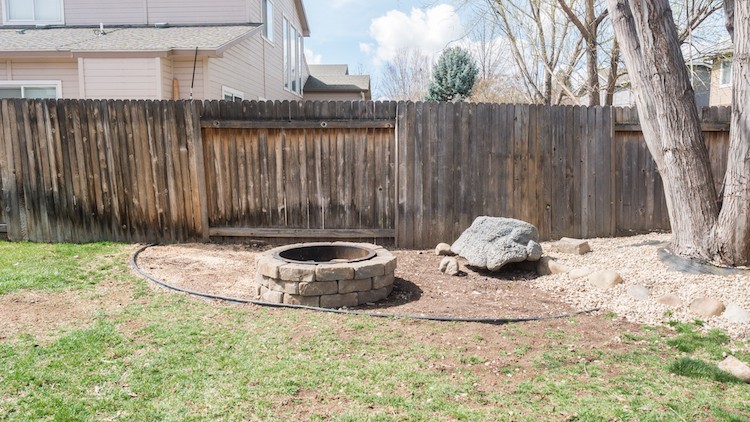
We have a very awkward corner in our backyard that’s shaded perfectly by a 150-foot silver maple tree. The tree is great for shade, but unfortunately, we didn’t have anything in that area to help use it as a functional entertainment space. That’s why we really got excited about partnering with Pavestone and The Home Depot, to bring to life this cozy entertainment paver corner and share the process.
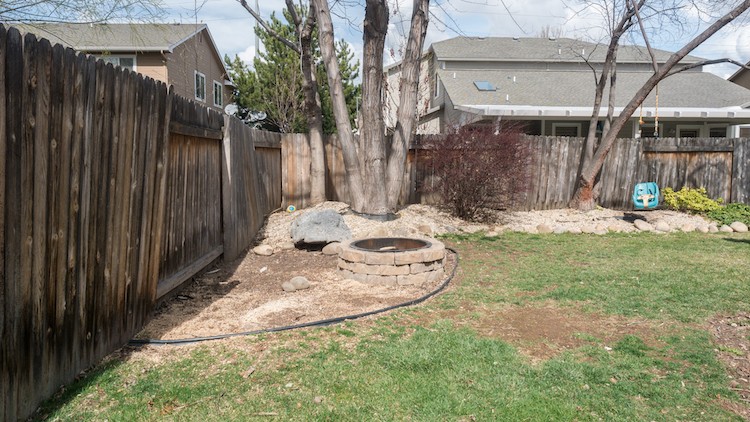
Marking off Your Working Space
First, mark out the area we were going to use to install the pavers. You can use steaks and string. Or you can even use marking paint to identify the area you will be working with.


Ensure the area marked out doesn’t have any sprinklers running through it and is free from any thick, superficial roots.

Prepping the Area
Dig out roughly 7 inches of soil to accommodate for the layers of gravel, sand, and the paver stone itself.

Level the Ground
Once everything it dug out, tamp down the area and use a level to ensure there are no high spots.


Create a Slope to Prevent Water Pool
The base will need to have 3-4 inches of gravel or road mix. Ensure there is a slight slope running away from the fence line to prevent pooling of water. The gravel mix will act as both a drainage system for wet weather, and a strong foundation for the pavers.


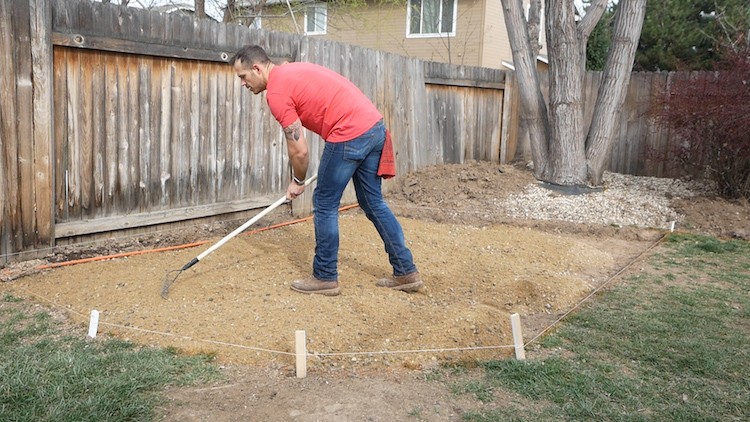

Using a tamper, compact the gravel down to keep the gravel mix from moving. Once you’ve packed the gravel down, lightly mist the area to help settle the sand.


The Second Layer: Paver Sand
The next layer will need to be 1-in of paver sand. To ensure an even spread, lay down two 1-in pvc pipes that are 10 feet long. Cover them with sand.
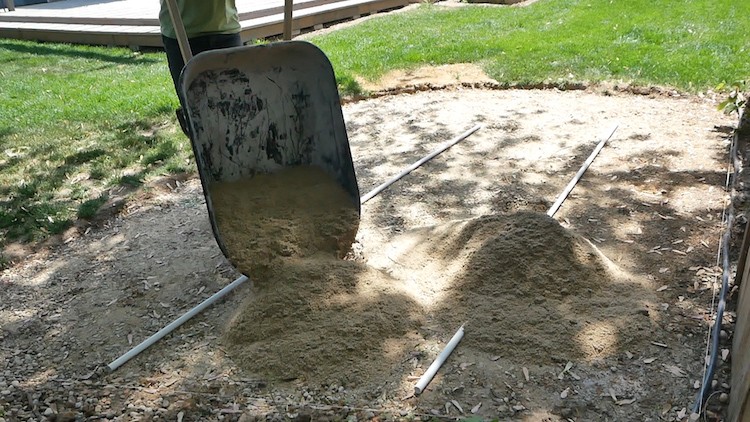
After that, using a long 2×4, scrape the sand along the pvc pipes to create a leveled layer of sand.

Some low spots will need more sand added to them. You will need to go over the area with the 2×4 once again.

Once finished, gently remove the pvc pipes without disturbing the sand.
The Perfect Pattern
Next, you’ll need to find a pattern that you chose to go with based off of the size of your pavers. When you come up with one, work your way from one corner, coming out. Place the paver gently on the sand, and then continue the pattern from there on.
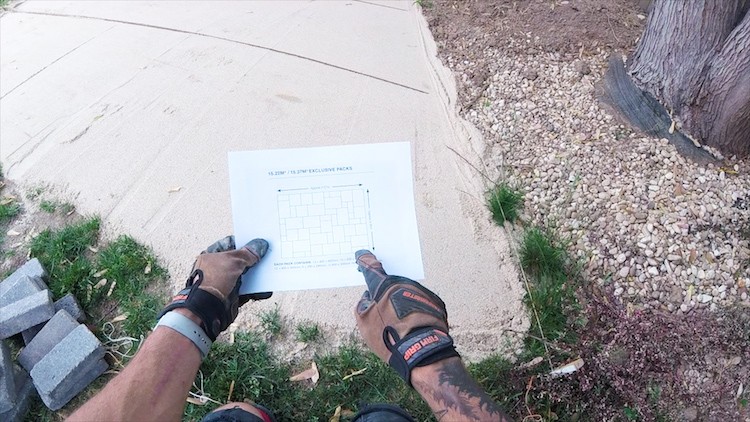

To help ensure a strong bond, keep the joints tight. Remember to walk gently on the pavers as to not shake them while setting them.

When running to the channel grooves from the pvc pipes, gently sprinkle the paver sand into the grooves until full, and then continue the pattern.
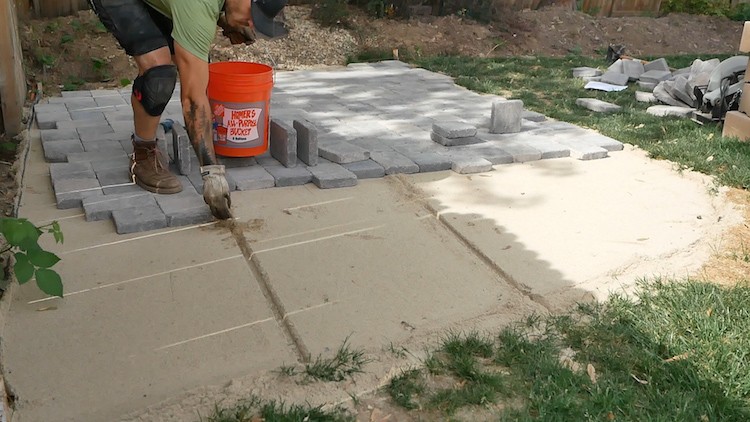
For the edges, corners, and awkward transition pieces, you can cut the paver using an angle grinder. I used a 4-inch masonry cutting blade. Be sure to use safety glasses and a respirator when doing this.

Setting the Pavers
Now that all the pavers are set out, use a plate compactor and go over the pad. This can be rented from The Home Depot Rental Center. The compactor will push and set the pavers by oscillating and compacting the pavers into the sand.
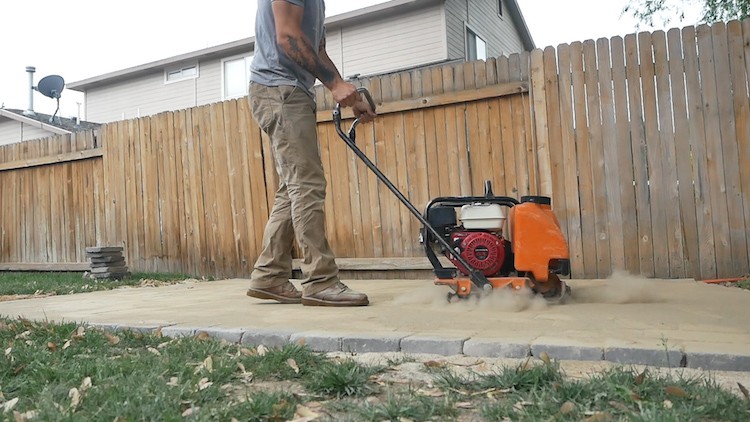
Once you go over the area once, spread polymeric sand (jointing compound) over the area with a broom. Then go over the area with a plate compactor one last time.

Then sweep the rest of the sand into all the remaining joints and lightly mist the area to activate the jointing compound in the polymeric sand, that will keep your pavers from moving.

Finish the area off with paver edging. Or, you can shove a little bit of concrete under the paver to keep the outer pieces from moving out.
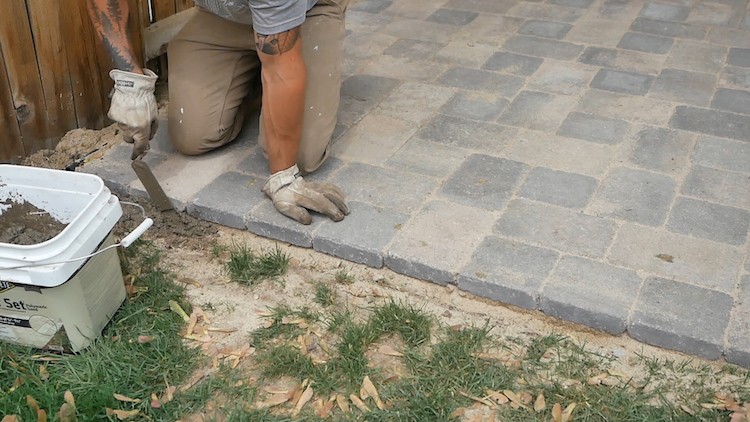
For the entertainment area, Pavestone has created kits out of their product with free instructions that can be downloaded from their website.
Building a Custom Bench
The bench we went with was a Rumblestone Garden Bench Kit in the Grey color.


The kit comes on a pallet with a variety of stone sizes in the correct quantity.

The assembly process entails stacking the stone in the specific formation and jointing each layer using heavy duty Concrete Adhesive.

The wood seating does not come with the kit, but the bench kit makes it easy to get creative with the types of wood you want to use, whether 2×4 or 4×4.

We went with eight 2×4 cedar board and sealed them with a coat of boiled linseed oil that we applied with a brush. This gave the bench area a really nice cold weathered gray and warm brown cedar feel.

Building the Fire Pit
The fire pit is topped off with a sleek metal Iron Oxide insert that lines the inner square edge of the fire pit. This is both for protection with the constant wear and uneven heat distribution on the edge, and for a decorative look.


We couldn’t be happier with how this Paver Patio turned out. The Grey Rumble stone contrasts perfectly with the deep warm cedar, and the L-shaped bench area compliments the square fire pit in a way that it creates its own isolated corner that’s both welcoming and cozy.

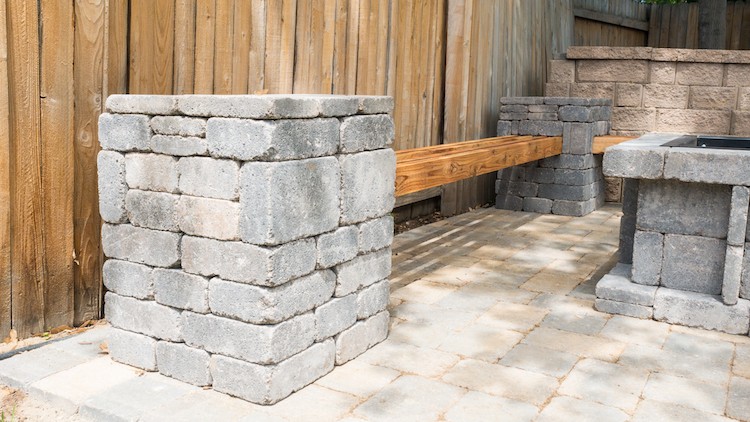


The Finished Corner

The post Outdoor Entertainment Space Update appeared first on The Home Depot Blog.



No Responses Yet